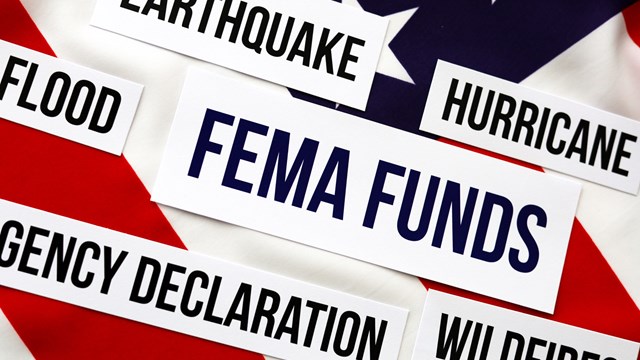Some days it rains, some days it pours – and some days, there’s a Category 4 hurricane. And while the latter is relatively rare, it can be a true disaster, and any condominium, co-op or homeowner’s association worth its salt should be prepared for it. Whether storm, fire, earthquake or freak accident, a board must take into account anything that may confront its community and put property and personal safety in danger, and come up with a plan to best lead its constituents to safety. And while this seems like quite the undertaking, there are guidelines in place and experts on hand who can help steer an association through disaster preparedness.
The Roof Is on Fire
While hurricanes are more common in Florida than elsewhere in the United States, nationwide data points to fires as being the most common cause for evacuation of residential properties. An association needs a firm policy in place for what to do in this type of stressful situation.
“The Red Cross responds to more than 60,000 home fires per year,” says Kevin F. Kelley, senior director of community preparedness programs for the American Red Cross. “Although they’re a little under the radar, they can happen in every community, and nationally they add up, so this is always a smart thing on which to work with residents. We have a campaign currently underway called 2 Steps 2 Minutes, and those two steps are basically to check your smoke alarms monthly and to practice home escape fire drills, where you try and get everyone out of the home in two minutes, as research indicates that it’s at that point where a person will be overcome by smoke and potentially killed.”
In condos and HOAs, there may be municipal codes or language in a community’s governing documents that speak to fire safety requirements, and a board should consult those accordingly and make sure that they are, at minimum, adhering to the law of the land. But as Kelley observes, “The general rules are to check the smoke alarms, make sure they’re working, and to practice a home fire escape drill that includes a meeting place that is well away from any potential fire. The reason being that when everyone gathers at the same place, no one – including firefighters – risks their lives trying to go into homes to rescue people who still may be inside. If the first responders know that they don’t need to undergo a search and rescue, they can just handle the suppression of the fire itself.”
According to Howard S. Dakoff, a partner in the Community Associations Practice Group of Levenfeld Pealrstein, LLC in Chicago, it’s important to listen to the experts when it comes to safe conduct in a fire because a board’s legal requirements extend only as far the duty to react responsibly—which in this case means working with first responders and property management to ensure that all residents vacate the building in an appropriate and timely manner.
“Management companies tend to drive the process when it comes to emergency crisis planning,” says Dakoff. “I’ve reviewed the rules of at least hundreds of associations in the 20 years that I’ve been practicing, and have never seen emergency procedures listed as a hard and fast rule. And I think the reason is that once a board takes on an obligation to do something specific, were it to fail to adhere to those steps, it could be held liable. It’s similar to how, should someone slip on some icy snow on your property that has not been touched, you’re not liable. But, had the snow been shoveled and were someone to then slip on it, you could be, since you’d modified a natural occurrence.”
Despite a lack of obligation via the law, Keith Hales, president of Hales Property Management in Chicago, recommends that all associations, regardless of size, have an emergency plan in place, and to host it online for easy access. “Make sure that all of the emergency exit signs and lights are working correctly, conduct thorough tests on fire extinguishers, alarms and sprinkler systems, and review the evacuation plans with the residents,” he urges. “Repetition and easy reference is key to ensuring that everyone is aware and educated on the steps which need be taken. Depending on the size and complexity of the building, clear instructions should be posted throughout the property.”
Residential Distress
The most important aspect of emergency management is communication. More likely than not, all residents will want to pitch in to evacuate and secure the community, but there needs to be a clear, easy-to-follow structure in place by which they do so, lest things dissolve into chaos.
Rather than post flyers or other printed material, Hales encourages associations to take advantage of online communication channels. “Every association should now have a website dedicated to its property that contains pertinent information, including emergency action plans,” he says. “The plans can be referenced and expounded upon in meetings, but also disseminated electronically to the residents. The board should consider a regular review of the plan at meetings, and, if necessary, set up evacuation drills. And, rather than continued reminders, the board should organize a day to knock on doors and remind residents of the emergency procedures, even handing out batteries and helping to install smoke detectors.”
Coordinating a rendezvous point in case of evacuation is always an option, but Dakoff confesses that in his experience, it is a rarity at best. “At least in case of a fire, I’ve never seen an association establish a rendezvous point. I’m not sure if it makes sense or not, as you don’t know who’d be in a building at any given time. Especially if the property is populated with younger people...they could be out at a bar until 2 in the morning, then out for work by 7. Again, the heavy lifting is carried out by the first responders and management. The fire department dictates everything, going floor to floor, knocking on doors, calling people to the extent that they have phone numbers available; they do their best to vacate the building.”
Finally, it’s imperative to identify elderly or disabled residents in your building or community, to make sure there’s a plan in place to take care of those who may not be able to do so themselves. “When coming up with an emergency plan for an association, it makes sense to assess what and where particular needs are located; there are difficulties that can slow someone down or act as a barrier,” says Kelley. “Once they’re identified, the question becomes whether or not they have someone on hand who can help them in time, or if it’s something that the association should incorporate into its plan and prioritize those who may need assistance getting out. If someone has mobility problems, we ask them to assess their situation in the context that, should they need to evacuate the property, what that would entail, what are the barriers, what assets are available, and if the building has adequate ADA provisions that will help them overcome any hurdle. It’s all about planning. And if the association has a specific safety committee, it could fall to them to identify folks who need be prioritized. Should someone have a serious issue that makes their exit extraordinarily difficult, the committee can explore options outside of the association that may be required. But the first step is identifying any potential issues.”
Hales notes that some associations have designated areas for the elderly or handicapped to wait in dubbed “areas of rescue,” which are often located in stairwells. “Residents should also develop some sort of call tree or responsibility tree that can be passed along to the board members, such that they can be held accountable for those residents that may not be able to respond adequately in the event of an emergency.”
And Dakoff explains that, despite the intricate nature of cobbling together an emergency plan, the most common types of disaster present very simple and specific goals: “In a fire, the aim is to work with first responders to ensure that everyone is vacated safely and timely. In a flood, it’s to contact those individuals affected and hire a plumber or water removal service. And for a snowstorm, it’s to ensure that removal is done appropriately so that cars in a below-grade garage can go up a ramp without rolling back down.”
Mike Odenthal is a staff writer and reporter with The Chicagoland Cooperator.










Leave a Comment